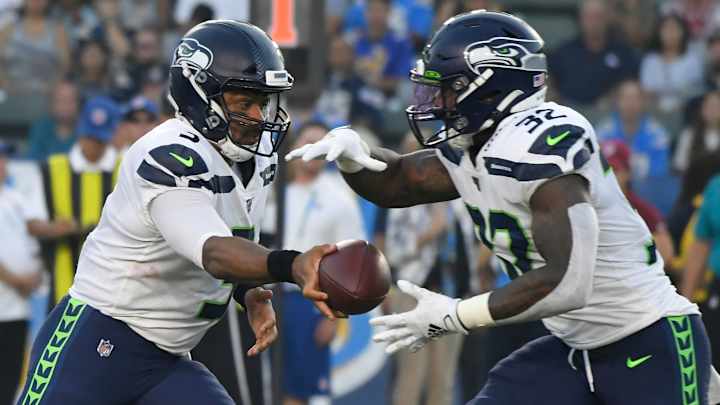Seahawks Continue to Lean on Run-Heavy Offensive Approach

The 2019 NFL season is just one week away, so Andy Benoit makes a few predictions for each NFL team. Today he analyzes the Seattle Seahawks, who finished 10-6 and second in the NFC West last year.
The offense continues to grind. There’s zero question that Russell Wilson is best suited for a run-first offense. The Seahawks rode Marshawn Lynch, often deep into the playoffs, from 2010 through ’15, were up and down for much of the two years after his retirement (when they rode Wilson) and started 0-2 last year before winning 10 of 14 to return to the playoffs. After that 0-2 start, Pete Carroll and new coordinator Brian Schottenheimer pivoted towards an old-school run-first approach—which they build on further in 2019. Newly signed left guard Mike Iupati is unreliable but fits the mauling profile this team desires. Playing a sixth offensive lineman—usually George Fant—20% of the time creates additional run gaps and variables in the ground game. That ground game remains built on north-and-south designs after years of force-feeding blockers the east and west mechanics of outside zone. Being run-heavy best propagates Wilson’s superb downfield and out-of-pocket passing, especially on play-action, while softly regulating his enthralling but rhythm-killing tendency to needlessly break down plays.
The receiving corps is fine. The recently retired Baldwin brought crucial slot craftiness to Seattle’s old scheme, but not to their new one, which, like with many run-based offenses, is built on vertical designs. Second-round rookie D.K. Metcalf is nowhere near the player Baldwin was, but he presents a perimeter downfield threat that has long been lacking, allowing understated star Tyler Lockett to handle more of the slot duties.
Poor D-line play sinks the defense. It’s no longer purely a Cover 3 zone scheme, as Carroll and defensive coordinator Ken Norton continue to regularly incorporate two-deep zone and match-zone, as well as one-deep man coverage. But like Cover 3, this approach is still reliant on having a potent four-man rush. With top defensive lineman Jarran Reed suspended six games, Frank Clark now a Chief and first-round rookie L.J. Collier missing training camp with a serious ankle sprain, the Seahawks simply have no pass rushing juice, especially early in the season. Quality linebacker play, plus the emergence of deceptively nimble nose-shade tackle Poona Ford, still gives Seattle a strong run D, but that only matters if the pass rush can make noise on third down. To generate pressure, Seattle must blitz, which often means sacrificing top coverage linebacker Bobby Wagner to rush the quarterback.
BOTTOM LINE: A run-heavy offense is only as good as the defense it complements. This defense lacks the depth and front-line fortitude to be great.
Question or comment? Email us at talkback@themmqb.com.
